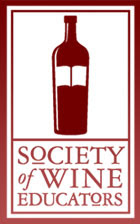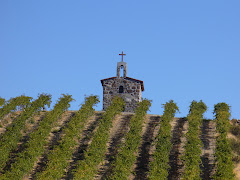 Chile has been a fairly easy wine subject, in that my store’s Chilean wine section continues to grow and grow. It is arguably one of the best selling categories for us right now, and is certainly based primarily in Bordeaux varietals. Carmenere, Chile’s signature grape, is one of the hottest things on our shelves right now, thanks to our wine madman, Alfonse, as well as the entire LD team.
Chile has been a fairly easy wine subject, in that my store’s Chilean wine section continues to grow and grow. It is arguably one of the best selling categories for us right now, and is certainly based primarily in Bordeaux varietals. Carmenere, Chile’s signature grape, is one of the hottest things on our shelves right now, thanks to our wine madman, Alfonse, as well as the entire LD team.Studying for the test (which I will have taken earlier this morning – I love posting ahead of schedule), here are the review questions the SWE study guide has given me:
1. Define the Chilean borders and describe their significance. There is a desert to the north, the Andes to the east, the Pacific Ocean to the west and Antarctica to the south. Their geographical location has cut them off from the world, and has subsequently kept their vines, all of which are pre-phylloxera vines from Europe, are actually impervious to the threat of phylloxera.
3. What is Pais? A red grape variety also known as Mission in the U.S. and Criolla in Argentina.
Hopefully, this and all the other info I have been swallowing has paid off. I will let you know in 6-8 weeks. (Wha?!)











2 comments:
Definitely looks like you are soaking in the knowledge!
I recently used to represent Chile (don't anymore) and I have some thoughts. You obviously have been studying harder than I, and the official book may say something different that what I have to say, so take the below as just some friendly comments.
1) The Atacama desert is the driest in the world and in the south you have Patagonia (not quite Antarctica)
2) If you are including Rapel as a valley instead of splitting it into Colchagua and Cachapoal, then Rapel would be the largest.
6) only in country. if the wine is exported the number is 85.
10) There is another region more southern called Malleco, although very few wines come from there.
I hope that helps!
Rob,
I soon discovered at the test (actually before) that the study guide is "dated." I posted previously about 29 DOCGs only to learn through reader comments it's now 44! Thanks for the tips though. I hope that when I take the next test, they'll incorporate info like this into the revised edition.
Post a Comment